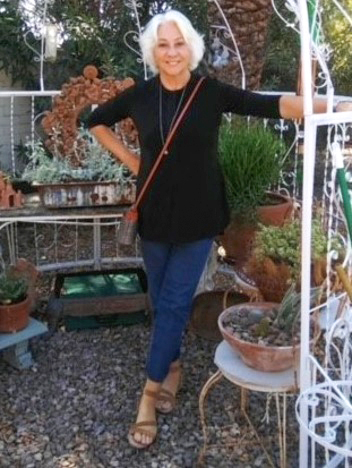Blog
Making Connections for Conservation

A story by JoAnne Allen. This article is also featured in the May 5, 2023, issue of The Ripple.
Click here to learn more and subscribe to this monthly e-newsletter!
A past naturalist once said, "Of all the questions which can come before this nation, there is none which compares in importance with the great central task of leaving this land even a better land for our descendants than it is for us.”
A few years ago, I began volunteering to help Cincinnati Nature Center find homeowners willing to display their native gardens as part of the annual Garden Tour: Noteworthy Natives. The Nature Center's Garden Tour is a daylong celebration of native plants in our region. This year, this event takes place on Saturday, June 24. The event raises money for the Nature Center’s work while inspiring visitors to consider native landscaping at their own homes. Most people who read The Ripple know how important native plants are for wildlife, climate resilience, water quality, and overall eco-health. The positive impact is greatly magnified when many adjoining yards “go native.” What I saw when soliciting homeowners to share their gardens was that many of these people have already influenced their neighbors to join them in creating natural space.
I began to see communities that have come together through their love for restoring the ecological health of their residential landscape. Townships, small cities, next-door neighbors, and coworkers come together across our region to share knowledge and ideas on how to incorporate native plants in their creations. I find that each of these communities has a deep conservation bond and works together to share methods, seeds, plants, and knowledge.
These caring people always inspire me with their garden creations. Some are more formal, some artsy, some whimsical, some filled with a large number of plants, and some take a more scientifically laid out approach.
Community native garden hotspots are important because they support the development of a lasting conservation ethic that connects nature with the outdoors. When we build these communities, it provides connection, belonging, support, and opportunities for growth. These communities establish peace, cooperation, and societal solutions that give us purpose.
Additional ideas I have tried, that you might also consider, to make local habitats more naturally abundant include:
- Taking a class
- Speaking up at HOA meetings
- Observing invasives in your yard or neighborhood and taking the initiative to remove them
- Noticing pollinator or native wildlife federation signage
- Joining your municipal beautification committee
- Talking with your neighbors about native gardening
- Installing a bluebird house or birdfeeder
- Or simply allowing yourself time to feel nature in your own yard or neighborhood
As it was said, it is our task to leave our earth better for our descendants. I believe there is no better way to do this than to embrace our innate affinity with the natural world and explore the importance of native plants.